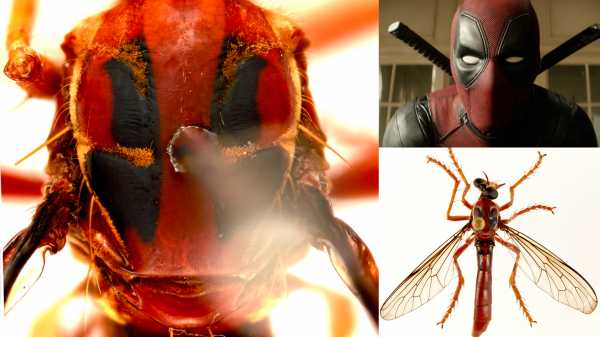
The fly’s abdomen is a perfect match for Deadpool’s mask.
Quick: Think of the most heroic animal on Earth.
If you said “the fly” — that notoriously annoying insect that eats garbage, breeds in dung and transmits disease all over the world — then you are on the same page as the Australian biology community. Researchers at Australia’s federal science agency, CSIRO, have described five previously unknown species of “assassin flies” and named them after some beloved Marvel superheroes.
Image 1 of 4
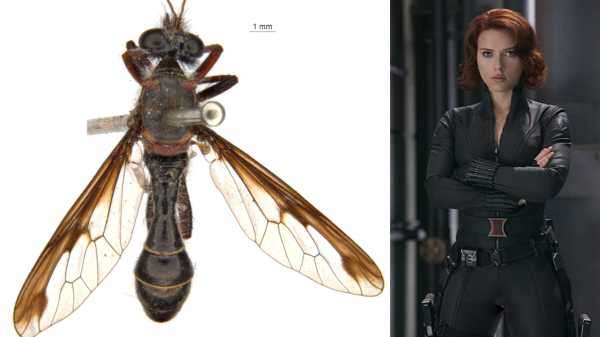
The “Black Widow fly,” Daptolestes feminategus, meaning woman wearing leather The Black Widow flyImage 2 of 4
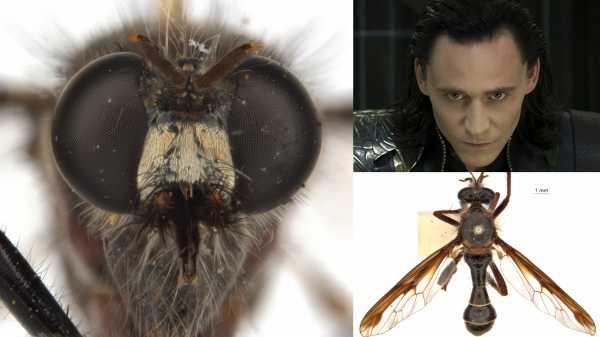
The “Loki fly”, Daptolestes illusiolautus, meaning elegant deception The Loki flyImage 3 of 4
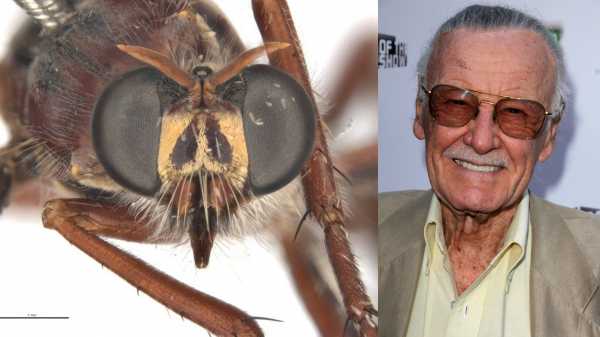
And the “Stan Lee fly,” Daptolestes leei, whose black eyes and bristly white whiskers resemble the famous comic book creator. The Stan Lee flyImage 4 of 4
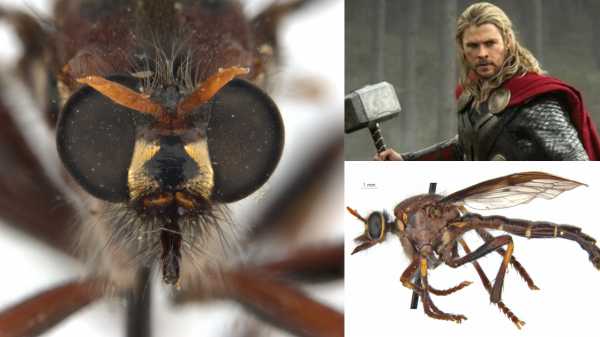
The “Thor fly”, Daptolestes bronteflavus, meaning blond thunder The Thor fly
In all seriousness, these flies look awesome, and the researchers wanted to give them appropriately awesome names. One fly with red and black markings on its abdomen, for example, was named after Marvel’s Deadpool, whose red-and-black mask looks virtually identical to the fly’s midsection.
“We chose the name Humorolethalis sergius,” CSIRO entomologist Bryan Lessard said in a statement. “It sounds like lethal humor and is derived from the Latin words humorosus, meaning wet or moist, and lethalis meaning dead.”
The other newly-described flies include:
—16 species named after celebrities
—Photos: 15 insects and spiders that may share your home
—In photos: Amazing fly eyes
Assassin flies (family name Asilidae) are notoriously aggressive bugs that feed primarily on other insects, often waiting in ambush before attacking their prey with neurotoxic saliva. Asilidae is a diverse family with more than 7,000 members — not unlike the Marvel cinematic universe. You can get to know all the newest members of the family in the CSIRO team’s study, published July 20 in the journal Austral Entomology.
Originally published on Live Science.
Sourse: www.livescience.com





